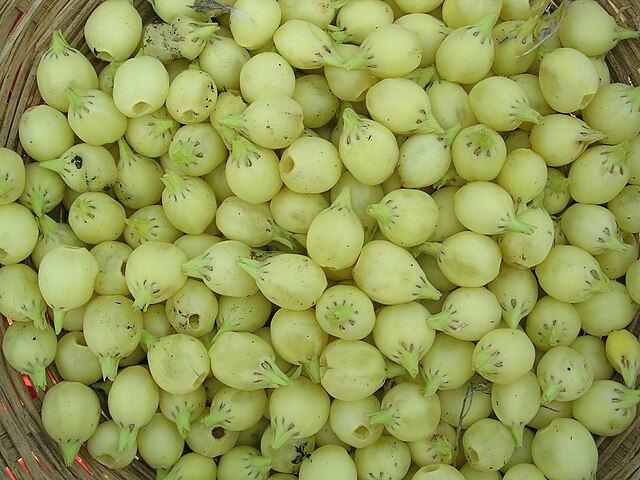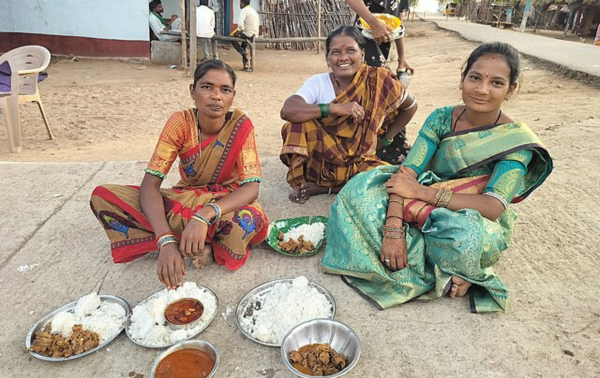A google search for “gond” usually leads to laddoos of a special kind, popular across India however, in mainstreaming one kind of food, another is marginalised. The culinary heritage of the Gondi people, one of the largest Scheduled Tribes in India, is a testament to their rich history of resilience, cultural practices, and deep connection to the land.
The Gondi community, with a history dating back to around 2,000 BCE, have a unique culinary tradition rooted in their agricultural roles. Over time, the Gondi people have adopted elements from Hindu customs, such as refraining from eating meat and adopting clothing styles like the sari and dhoti. Their animistic religious beliefs influence their respect for nature and non-human spirits.

The Gonds have inhabited forests for centuries. Their diet primarily consists of millets like kodo and kutki, rice, and a special drink with distilled mahua flowers for celebrations. Tobacco cultivation is also significant in their agricultural landscape. Staples like the mahua, seasonal vegetables, and locally sourced meats like rabbit and fish form the foundation of Gond dishes. Spices are used judiciously but while allowing the natural flavors of ingredients to shine through. Perla, a fermented gruel made from rice or millet, is the lifeblood of Gond cuisine. It serves as a staple food, a base for curries, and even a refreshing drink when diluted. Perla’s fermentation process not only enhances its nutritional value but also allows for longer storage, crucial for communities living in remote areas.
Gond cuisine thrives on seasonality. During the monsoon, when mushrooms sprout from the forest floor, dishes like “Kuttu ki Sabzi” – a stir-fry of forest mushrooms – are made. Summer brings a bounty of fresh vegetables, featuring prominently in stews and curries. Meat, while not consumed daily, is reserved for special occasions and festivals. Dishes like “Bhintu,” marinated and grilled chicken, showcase the Gonds’ skill in utilising all parts of the animal. Food plays a central role in Gond rituals and celebrations. During the harvest festival, “Hareli,” offerings of mahua and freshly harvested grains are made to deities. Special dishes are prepared for weddings and funerals, each with specific meanings and symbolic significance. The sharing of meals during these occasions strengthens social bonds and reinforces cultural identity.
The Gondi people’s historic resistance to external influences like British colonisation and now, the dominant groups in central India reveal their commitment to preserving their way of life. Historically, they practiced a form of shifting cultivation and co-existed with other communities like the Baigas and Bharias. This interaction led to a fascinating exchange of culinary influences. Gonds might have adopted spices like turmeric and chilies from neighboring communities, while their forest finds, like the use of mahua flowers, might have found their way into other cuisines.
The socio-cultural significance of Gond cuisine lies in its role as a symbol of identity, resilience, and cultural heritage for the community. The community’s emphasis on well-being extends beyond food to encompass environmental stewardship and ecosystem conservation. The 21st century presents challenges and opportunities for Gond cuisine. Modernisation and deforestation threaten the traditional food systems and access to indigenous ingredients. While information on their food is accessible, often it is difficult to find and invisiblised. In such a scenario, it is essential we engage with marginalised cuisines as a form of resistance and platform them. Indian food is diverse, it is hyper-local and sustainability is built into how it has historically evolved. It is important when thinking about Indian cuisine to not simply learn or think of it in terms of what we see around us, but the sheer variety that has come to exist, with respect. This food is one such that demands such attention.
By – Sulagna Maitra
Sources:
https://qz.com/how-west-african-cuisines-originated-and-developed-over-1849449285
https://study.com/academy/lesson/gond-history-language-culture-gondi-people.html
